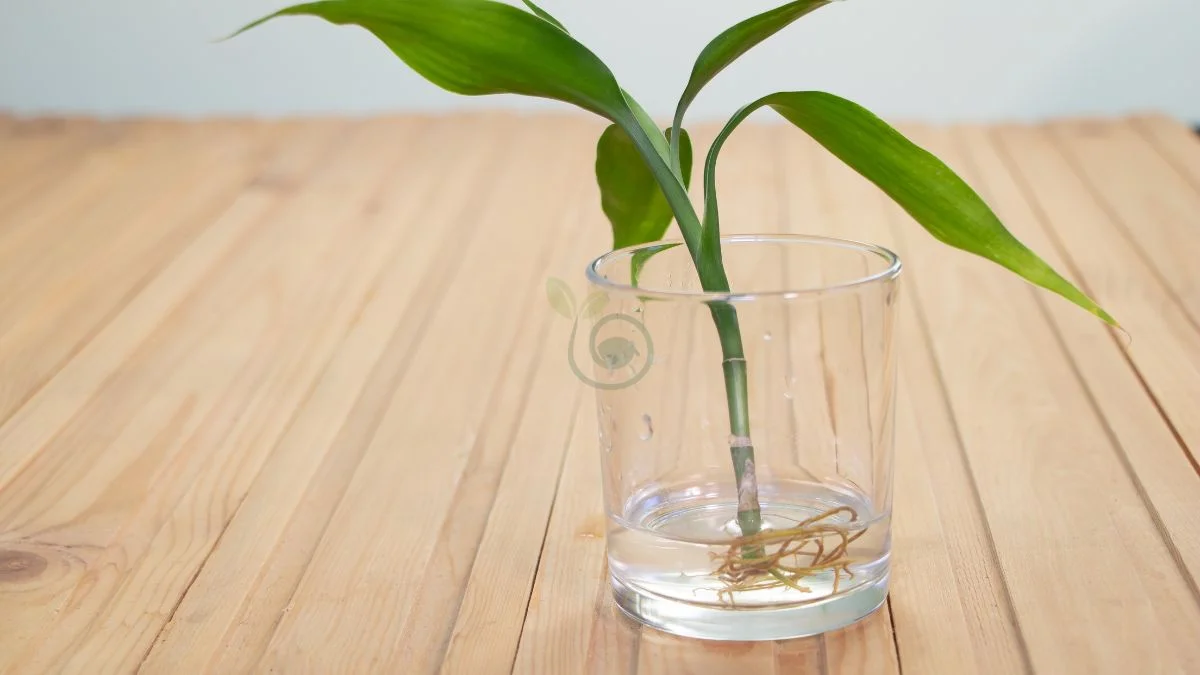Unveil the secrets of incorporating this eco-friendly gem into your décor and witness the magic it creates. Enhance your surroundings with the elegance and simplicity of a bamboo small plant, elevating your space to new heights. Join us on a journey to explore the wonders of bamboo and unlock its full potential today.
Key Takeaways
- Understanding Lucky Bamboo can help you provide the right care and environment for this plant.
- Preparing for Planting ensures a successful start for your lucky bamboo plant.
- Optimal Growing Conditions like indirect light, clean water without chlorine, and quality are crucial for the health of your bamboo plant.
- Regular Maintenance and Care, such as changing water every 2 weeks, is key to sprucing up your lucky bamboo vase and ensuring new growth on its stems.
- Utilize Propagation Techniques like cutting and replanting to expand your lucky bamboo collection.
- Troubleshooting Common Issues promptly, such as yellowing leaves, can help maintain the health of your lucky bamboo plant.
Understanding Lucky Bamboo
Growth Basics
Lucky bamboo small plants follow a unique growth pattern, starting as tiny shoots and gradually developing into tall, elegant stems and require water to thrive. The stages of growth include initial sprouting, leaf development, and eventual height increase. Factors like proper watering, suitable potting soil, and regular pruning significantly impact their growth.
Ideal Conditions
To ensure the healthy growth of lucky bamboo small plants, it is essential to water the stalks and provide optimal conditions. This includes maintaining the right temperature range between 65-90°F and high humidity levels. Adequate sunlight exposure is crucial but should be indirect to prevent leaf burn. Using a well-draining pot with fresh water is also vital for their well-being.
Cultural Significance
Lucky bamboo small plants with water-filled stalks hold significant cultural importance and symbolism in various traditions worldwide. They are often associated with luck, prosperity, and positive energy in Feng Shui practices. In Chinese culture, they symbolize good fortune and are commonly given as gifts during celebrations like weddings or housewarmings. Lucky bamboo plants with water-filled stalks are believed to bring harmony and balance to living spaces.
Preparing for Planting
Choosing the Right Pot
When planting bamboo small plants, it's essential to choose a pot that suits their growth needs. Opt for a pot that is appropriately sized and made of suitable material. Ensure the pot has drainage holes to prevent waterlogging, promoting healthy root development. Consider the depth of the pot as well, allowing ample space for the roots to expand.
Selecting Soil and Fertilizer
For optimal growth of bamboo small plants, selecting the right soil and fertilizer is crucial. Choose well-draining soil that is rich in nutrients, providing a conducive environment for plant growth and water. When it comes to fertilizers, opt for a balanced option specifically designed for bamboo plants. Understanding the significance of soil quality in nurturing bamboo plants is vital for their overall health and development.
Optimal Growing Conditions
Light and Location
To ensure bamboo small plants thrive, place them where they receive ample natural light. Avoid prolonged exposure to direct sunlight, opting for the best indoor spot instead.
Watering Practices
Establish a regular watering schedule for bamboo small plants to maintain their health. Use room temperature water to prevent shocking the plant and monitor soil moisture levels diligently.
Temperature and Humidity
Consistent temperature levels are crucial for the healthy growth of bamboo small plants. Maintain proper humidity to replicate the plant's natural habitat and shield them from extreme temperature changes.
Maintenance and Care
Regular Pruning
Pruning is essential for promoting new growth in bamboo small plants. Trim any dead or yellowing leaves to maintain plant vitality. Overgrown stems should be pruned to ensure the plant retains its shape and overall health. Regularly inspect the plant for any signs of pruning needs, such as overcrowding or disease.
Fertilizing Schedule
Maintaining a consistent fertilizing schedule is crucial for providing essential nutrients to bamboo small plants. Adjust the frequency of fertilization based on the plant's growth rate and seasonal changes. Opt for organic fertilizers to support the overall health and growth of bamboo small plants, avoiding chemical-heavy options that can harm the plant over time.
Repotting Tips
Knowing when to repot your bamboo small plants is key to their continued health and growth. Keep an eye on their growth patterns; if they outgrow their current container, it's time for a new pot. When repotting, use fresh soil and choose a slightly larger pot to accommodate the growing root system properly. Handle the roots with care during this process to minimize stress on the plant and encourage seamless acclimatization to its new environment.
Propagation Techniques
Cutting Methods
When propagating bamboo small plants, there are various cutting methods to explore. Taking cuttings from mature bamboo small plants is crucial for successful propagation. The best practice involves cutting and preparing sections of the bamboo plant for rooting.
- Cutting Methods:
- Select healthy stems from mature bamboo plants.
- Use sharp, sterilized tools to make clean cuts.
- Cut at a 45-degree angle to increase the surface area for root development.
Rooting Process
To propagate bamboo small plants, follow a step-by-step rooting process. Providing optimal conditions for root development is essential during this stage. Monitoring the progress of root growth ensures a successful propagation outcome.
- Rooting Process:
- Place the cuttings in a well-draining potting mix.
- Maintain consistent moisture levels without overwatering.
- Keep the cuttings in a warm, humid environment to encourage root growth.
Troubleshooting Common Issues
Yellow and Brown Leaves
Yellow and brown leaves in bamboo small plants can signal nutrient deficiencies or overwatering problems. These issues lead to leaf discoloration, affecting the plant's health. To address this, identify the root cause and adjust watering habits accordingly. Implement corrective measures such as fertilizing to restore the plant's health.
Black Roots and Mushy Stalks
Black roots and mushy stalks are signs of potential root rot in bamboo small plants. This condition can severely damage the plant if left unattended. Investigate the root cause of black roots, which is often excessive moisture or poor drainage. Take immediate action by trimming affected areas and repotting the plant in well-draining soil to prevent further damage.
Algae and Browning Tips
To prevent algae growth around bamboo small plants, ensure proper moisture control to maintain a healthy environment for the plant. Browning tips on leaves may result from environmental stress or lack of essential nutrients. Address this issue by pruning affected leaves, adjusting environmental conditions, and providing adequate nutrients through fertilization. Consistent care practices will help sustain the overall health and appearance of bamboo small plants.
Lucky Bamboo and Chinese Traditions
Symbolism and Feng Shui
Lucky bamboo, a popular bamboo small plant, holds significant symbolic meanings in various cultures. In Chinese traditions, it symbolizes good luck, prosperity, and positive energy flow. The number of stalks in a lucky bamboo arrangement also carries specific meanings - three stalks represent happiness, wealth, and longevity.
In Feng Shui practices, bamboo small plants are believed to attract auspicious chi energy. Placing them in specific areas of your home or workplace can enhance the flow of positive energy, promoting harmony and balance. For example, positioning a lucky bamboo plant in the eastern part of a room is said to bring health and vitality.
Strategically incorporating bamboo small plants in your living space can create a serene atmosphere while inviting good fortune. By placing them near entrances or in areas associated with wealth or relationships, you can harness their positive energies for overall well-being.
Traditional Care Practices
Understanding the traditional care practices for bamboo small plants is essential for their health and longevity. These plants thrive in indirect sunlight and require regular watering to keep their roots moist but not waterlogged. Using distilled or filtered water helps prevent mineral buildup that can harm the plant.
Nurturing bamboo small plants involves occasional pruning to maintain their shape and encourage new growth. Feeding them with a diluted liquid fertilizer every few months can promote vibrant green leaves and strong stalks. It's crucial to avoid overfeeding as it can lead to yellowing leaves or root rot.
Implementing age-old techniques such as changing the water every two to four weeks and cleaning the container helps prevent algae growth and maintains a healthy environment for bamboo small plants. Observing these care rituals ensures that your lucky bamboo stays vibrant and brings positivity into your surroundings.
Summary
In your journey to care for lucky bamboo, you've learned about its origins, ideal growing conditions, maintenance tips, propagation techniques, common troubleshooting issues, and its significance in Chinese traditions. By now, you're equipped with the knowledge to nurture these plants successfully. Remember to provide them with adequate light, water, and occasional fertilization to ensure their well-being. If you encounter any problems along the way, refer back to the troubleshooting section for guidance. Lucky bamboo not only adds a touch of greenery to your space but also symbolizes good fortune and positive energy according to Chinese beliefs. Embrace this plant's beauty and meaning as you incorporate it into your surroundings.
Frequently Asked Questions
Can lucky bamboo be considered a small plant suitable for indoor spaces?
Yes, lucky bamboo is an ideal small plant for indoor spaces due to its compact size and minimal care requirements. It adds a touch of greenery and elegance to any room while symbolizing good luck and positivity.
How should I prepare for planting lucky bamboo?
To plant lucky bamboo, ensure you have a clean container with pebbles or rocks for support, distilled water for watering, and indirect sunlight. Trim any yellowing leaves before planting to encourage healthy growth and maintain aesthetics.
What are the optimal growing conditions for lucky bamboo?
Lucky bamboo thrives in indirect sunlight, temperatures between 65-90°F (18-32°C), and high humidity levels. Use distilled water to prevent mineral buildup in the soil. Rotate the plant occasionally to ensure even growth on all sides.
How can I best maintain and care for my lucky bamboo plant?
Maintain your lucky bamboo by changing the water every 2-4 weeks, ensuring it remains at the same level as before. Trim any roots that outgrow the container and provide liquid fertilizer sparingly to promote growth without causing damage.
What propagation techniques can I use for lucky bamboo?
You can propagate lucky bamboo through stem cuttings placed in water until roots develop. Once rooted, transfer the cutting into soil or continue growing it in water. Remember to keep the new plant in optimal conditions for successful growth.
How can I troubleshoot common issues with my lucky bamboo plant?
Common issues like yellowing leaves or root rot can be resolved by adjusting watering frequency, providing proper drainage, and ensuring adequate light exposure. Remove any affected parts promptly to prevent further damage and maintain your plant's health.
Are there any Chinese traditions associated with lucky bamboo?
Lucky bamboo holds significance in Chinese culture as a symbol of prosperity, happiness, and positive energy. It is often gifted during celebrations like weddings or housewarmings to bring good fortune and blessings to the recipients' lives.
Image Source: Paid image from CANVA





